July 1980 lunar eclipse
A penumbral lunar eclipse took place on July 27, 1980. The moon passed in the northern edge of the Earth’s penumbral shadow, and was the 70th lunar eclipse of Saros cycle 109.[1]
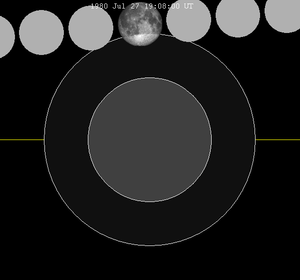
Visibility
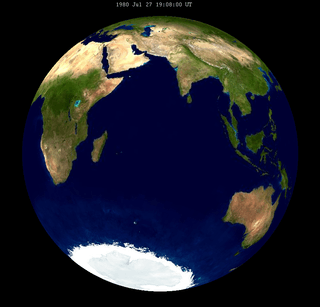
Related lunar eclipses
Lunar year series
| Lunar eclipse series sets from 1980–1984 | ||||||||
|---|---|---|---|---|---|---|---|---|
| Descending node | Ascending node | |||||||
| Saros | Date Viewing |
Type Chart |
Gamma | Saros | Date Viewing |
Type Chart |
Gamma | |
| 109 | 1980 Jul 27 |
Penumbral |
1.41391 | 114 | 1981 Jan 20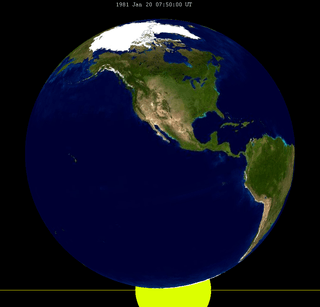 |
Penumbral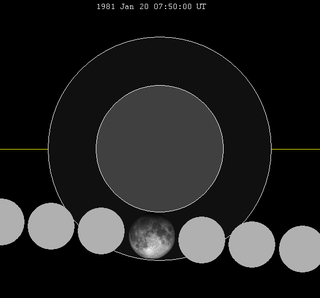 |
-1.01421 | |
| 119 | 1981 Jul 17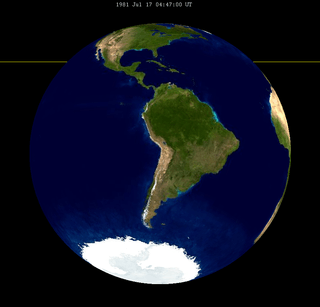 |
Partial |
0.70454 | 124 | 1982 Jan 09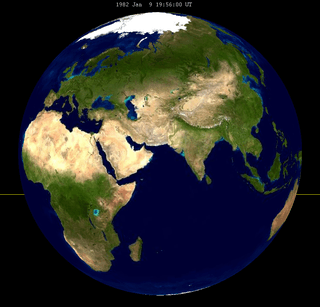 |
Total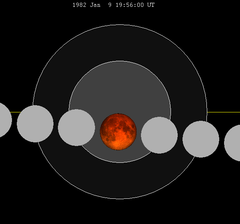 |
-0.29158 | |
| 129 | 1982 Jul 06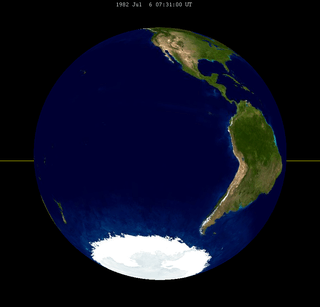 |
Total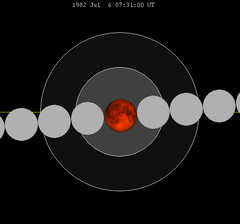 |
-0.05792 | 134 | 1982 Dec 30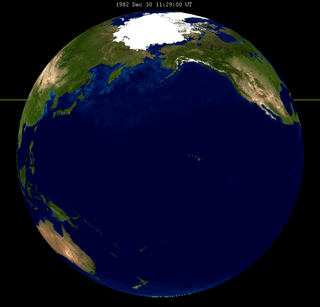 |
Total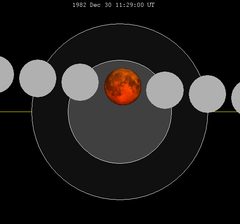 |
0.37579 | |
| 139 | 1983 Jun 25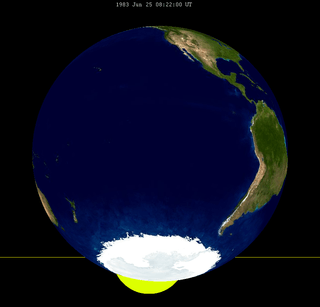 |
Partial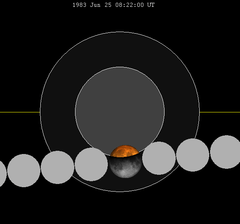 |
-0.81520 | 144 | 1983 Dec 20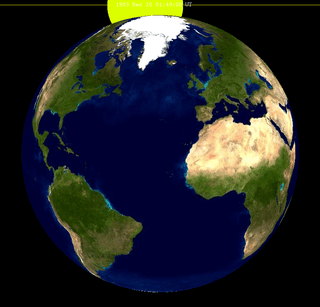 |
Penumbral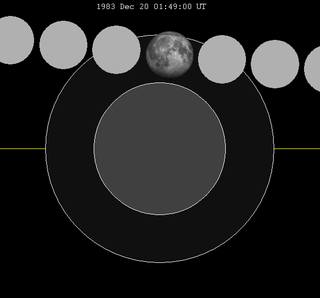 |
1.07468 | |
| 149 | 1984 Jun 13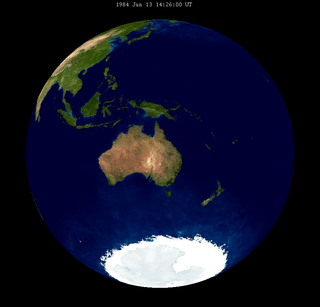 |
Penumbral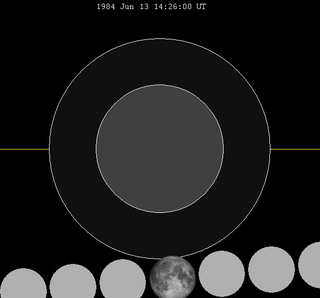 |
-1.52403 | |||||
| Last set | 1980 Aug 26 | Last set | 1980 Mar 13 | |||||
| Next set | 1984 May 26 | Next set | 1984 Nov 20 | |||||
Half-Saros cycle
A lunar eclipse will be preceded and followed by solar eclipses by 9 years and 5.5 days (a half saros).[2] This lunar eclipse is related to one partial solar eclipse of Solar Saros 116.
| July 22, 1971 |
|---|
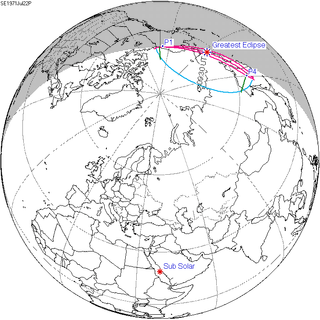 |
Saros series
This lunar eclipse is the third to last member of Saros series 109. The next event is on August 8, 1998. The previous event was on July 17, 1962.
gollark: Anyway, you don't need nginx, just use python flask/AIOHTTP/whatever.
gollark: Training data? *Interesting*.
gollark: That's poorly defined. Be unpoorly defined.
gollark: What do you want to *do* with nginx, exactly?
gollark: It's a native C program, code isn't *that* big mostly.
See also
- List of lunar eclipses
- List of 20th-century lunar eclipses
Notes
- Hermit Eclipse: Saros cycle 109
- Mathematical Astronomy Morsels, Jean Meeus, p.110, Chapter 18, The half-saros
This article is issued from Wikipedia. The text is licensed under Creative Commons - Attribution - Sharealike. Additional terms may apply for the media files.